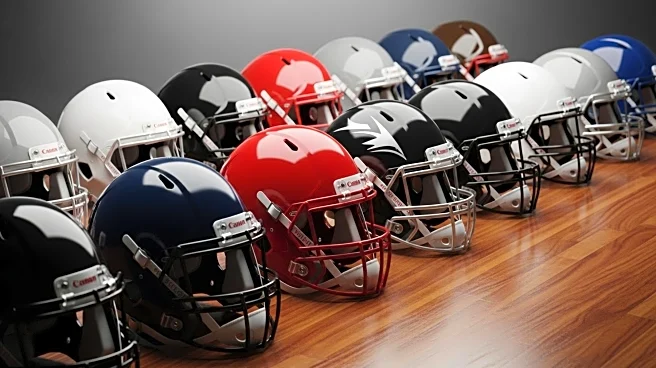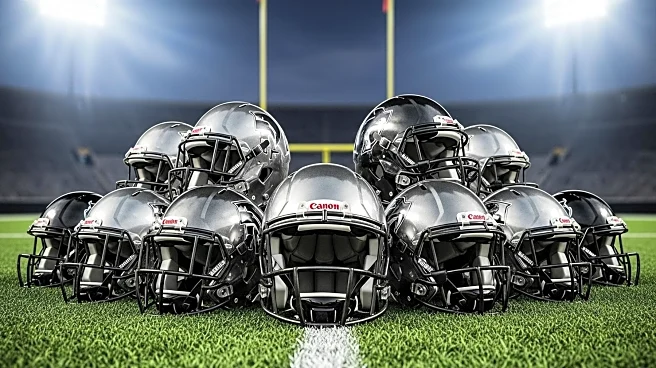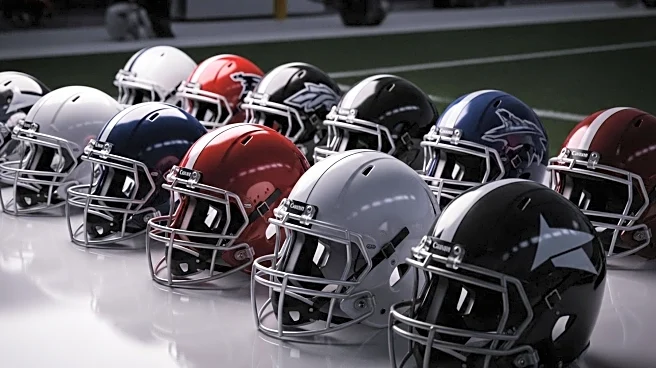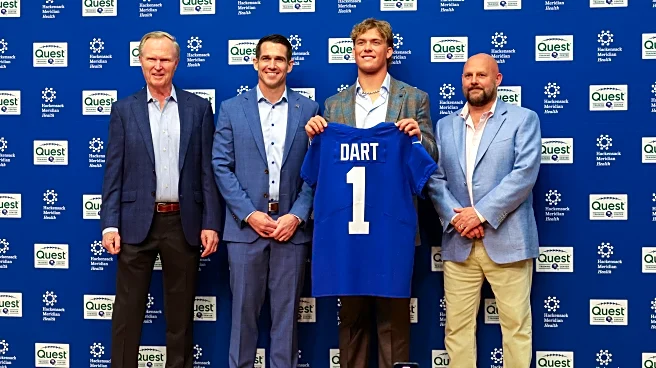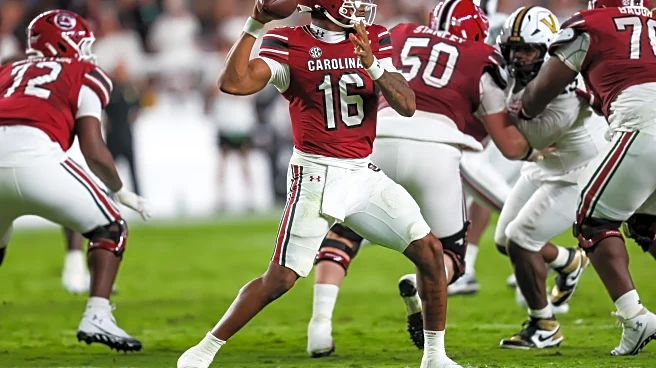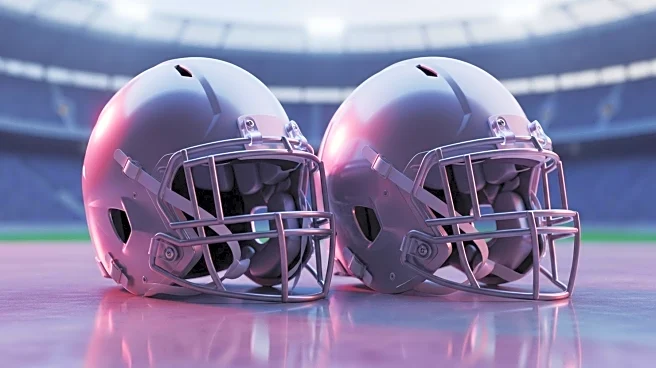What's Happening?
The 2026 NFL draft class is shaping up with significant developments, particularly in the wide receiver position, which is now the most represented in the top 50 prospects. Miami's Rueben Bain Jr. is emerging as a standout defensive end, potentially challenging quarterbacks for the top draft spot. Other notable prospects include defensive linemen Woods and Mendoza, who are showing strong performances. The draft class also features promising quarterbacks like Dante Moore, who is gaining attention for his poise and accuracy under pressure. The rankings reflect shifts in player evaluations as the season progresses.
Why It's Important?
The prominence of wide receivers in the draft rankings highlights a shift in NFL team strategies, emphasizing the importance of dynamic offensive playmakers. This trend could influence team decisions, with franchises prioritizing receivers who can impact games significantly. The emergence of defensive players like Bain Jr. suggests a potential shift in draft priorities, as teams may consider bolstering their defensive lines over traditional quarterback selections. The evolving rankings underscore the competitive nature of college football and the impact of player performances on draft stock.
What's Next?
As the season continues, prospects will have opportunities to solidify their positions in the draft rankings through their performances. NFL scouts will be closely monitoring games, assessing players' abilities to adapt and excel under pressure. The draft process will involve extensive evaluations, with teams considering both immediate impact and long-term potential. Prospects like Moore will need to maintain their performance levels to secure top draft positions, while others will aim to capitalize on their current momentum to rise in the rankings.
Beyond the Headlines
The focus on wide receivers and defensive players in the draft rankings reflects broader trends in the NFL, where teams are increasingly valuing versatility and impact over traditional roles. This shift could lead to changes in how teams approach player development and scouting, emphasizing adaptability and multi-dimensional skills. The draft process also highlights the importance of college football as a pipeline for professional talent, with players' performances influencing their career trajectories and opportunities.

